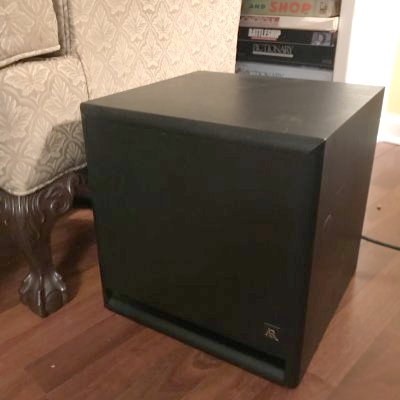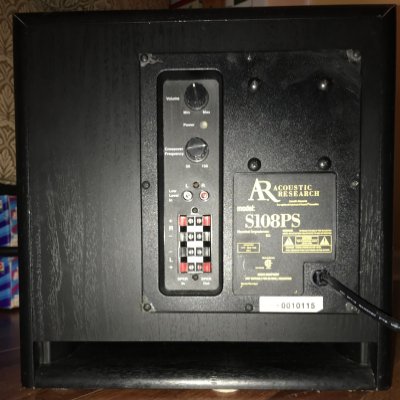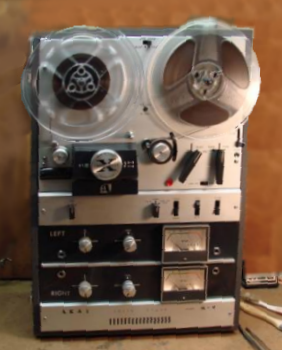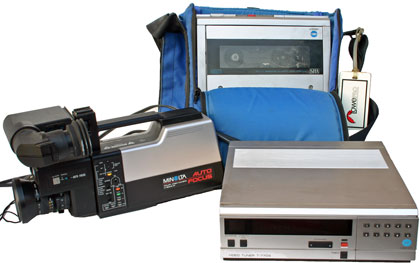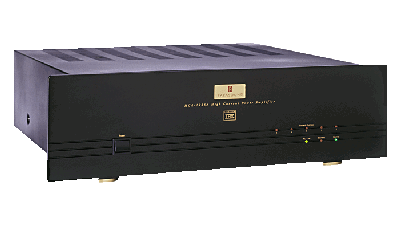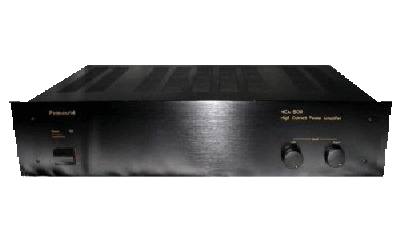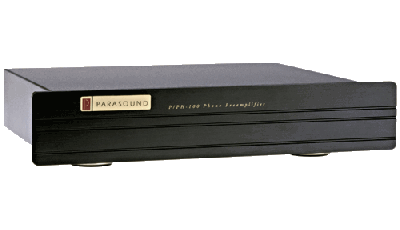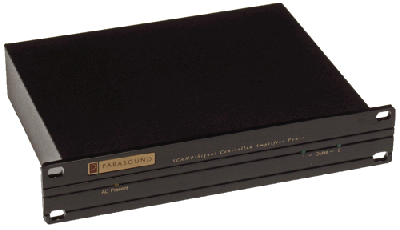Home AV Components and Brands
Acoustic Research Inc.
company website

The AR1 was the first acoustic suspension speaker employing a tuned port

A pair of classic AR3 bookshelf speakers are on display in the Smithsonian
Acoustic Research is a manufacturer of high-end audio equipment based in Cambridge, Massachusetts. It was founded in 1952 by New York "University electronics instructor Edgar Villchur and his student, Henry Kloss, to produce a new type of loudspeaker. Loudspeakers in the '50s used massive woofers to reproduce bass. Edgar Villchur designed and patented "acoustic suspension", a tuned port that reinforced bass response and allowed him to use small drivers and small enclosures. AR built and sold the AR-1 for $185 ($1700 in 2018 dollars). The AR-1 set new standards of low-frequency performance and low distortion that were unsurpassed for many years. Edgar Villchur went on to design the AR-3 speaker systems, which was the state-of-the-art in speaker design. In 1993, an AR-3 was placed on permanent display in the Information Age Exhibit of National Museum of American History at The Smithsonian Institution in Washington, DC. .Henry KLoss left AR in 1957 to form his own loudspeaker company, KLH
In 1967, Acoustic Research was bought by Teledyne, Inc., and for the next 22 years it continued development and operations as the world's second largest supplier of branded loudspeakers. Although Acoustic Research had continued product development, by 1989 AR had dropped to fifth place worldwide. Teledyne sold the company to their major competitor, Jensen Electronics. In 1996, Jensen, including AR, was sold to Recoton Audio Corporation. In 2003, Audiovox (now Voxx International) acquired the U.S. audio operations of Recoton, and continues with AR-brand speaker development and sales./p>
My Experience:
My only experience with AR was an 8-inch downward firing sub-woofer I bought at the Goodwill Thrift Store for $8. The build was sturdy and the bass was strong and very tight. I would say it out-performed my Polk Audio 8" front-firing subs.
Akai Electric
The original Akai company was founded in 1946 by Masukichi Akai and his son, Saburo Akai in Tokyo, Japan. Akai's products included amplifiers, microphones, receivers, turntables, video recorders and loudspeakers, but their main focus was reel-to-reel audiotape recorders and audio cassette decks. By 1991 the company's business became troubled and it left the audio industry.
Today, there is a company called Akai Professional, but it is unrelated to the original Akai. In 1992, Jack O'Donnell purchased a company then known as Numark Electronics, a small DJ equipment manufacturer that had been around since the early ''70's. In 2001, O'Donnell purchased Alesis, a company with a history of making innovative music technology affordable. Today, Alesis is the fastest growing electronic drum company in the world. In 2002, O’Donnell ventured into the notoriously competitive consumer electronics industry with the creation of ION Audio and its flagship product, the USB conversion turntable. In 2005, O’Donnell purchased Akai Professional, manufacturers of professional studio production gear. In 2014, O'Donnell purchased the venerable brands of Denon Professional, Denon DJ and Marantz Professional. Today, this elite family of hardware and software companies is known as inMusic, but each of the brands maintain their unique brand identity.
My Experience:
My father bought an Akai open-reel tape deck while on furlough during the VietNam war. The recorder had many adjustments that could be made to compensate for the difference in U.S. and overseas voltage and frequency. The deck could be set for 110v-60Hz or 220v-50Hz operation. Additionally, there was a speed switch and optional capstans which allowed for tape transport speeds of 1 7/8, 3 3/4, 7 1/2 or 15 inches per second. I learned by experimentation about three factors that are crucial to tape playback quality: tape width, tape composition, and transport speed. Simply put, the wider the tape, the better the sound, the faster the speed, the less tape hiss noise, and the higher the magnetic metal content, the higher the frequency response. Chromium Dioxide tape is better than Ferris Oxide which is better than other magnetic substances.
The Bose Corporation
company website
The Bose corporation was founded in 1964 by Amar Bose, a graduate student from Massachusetts Institute of Technology (MIT). He had purchased a stereo system and was disappointed with its performance. He noticed the sound was different directly in front of the speakers than off-axis. This led him to research the importance of indirect sound on perceived audio quality. Dr Bose began extensive research aimed at clarifying factors that he saw as the fundamental weaknesses plaguing high-end audio systems: speakers failed to account for the spatial properties of the radiated sound in typical listening spaces. He researched the implications of sonic spatial effect on human hearing, or psycho-acoustics, i.e. the listener's ear as a part of the entire audio reproduction system. Eight years later, he started the company, charging it with a mission to achieve "Better Sound Through Research", now the company slogan. A majority of Bose Corporation's non-voting shares were given by Amar Bose in 2011 to his alma mater and former employer, MIT. They receive cash dividends, but are prohibited from selling the shares and are unable to participate in the management and governance of the company.
Bose has built a successful reputation based on three new audio-design paradigms and an intensive marketing strategy.
Design paradigms
- Minimize Hardware: Create room-filling bass with compact Wave Canons, not large drivers
- Maximize Reflections: Use direct and reflected sound to create a large sound stage.
- Minimize Footprint: Hide the hardware using bass-and-satellite Speaker Systems
Minimize the Hardware
Most speaker designs use large-diameter cone drivers (up to 16") and a ported box to increase the bass output of their cabinets. Bose never used very large woofers to reproduce bass. Instead, they use a folded wave guide to coax the most bass from mid-sized drivers. Klipshorn used a folded horn wave guide to reverberate and reinforce the bass from a high-powered horn driver in its classic (and monstrous) Bella-Klipsch speakers. The Bose Wave Radio is an extreme example of Bose's use of a wave guide to reinforce the bass response.
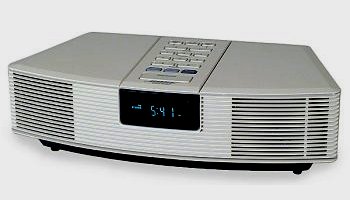
The Bose WAVE RADIO
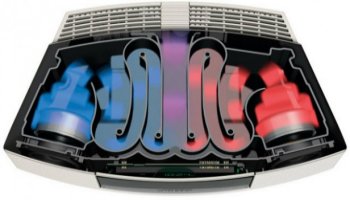
The "Wave Canon" folded horn
Maximize Reflections
The Bose line of speakers have focused on creating a fuller, room-filling sound stage through the use of off-axis drivers. From the smaller bookshelf speakers to the highly successful 901s, all Bose designs have angled the drivers to disperse sound beyond the frontal plane.

Bose Model 301

Bose Model 401

Bose Model 501

Bose Model 601
The famous Bose 901's took this philosophy to extreme, having only two forward-facing drivers while eight drivers faced the rear.

Minimize the Footprint
The Bose Acoutimass series was based on the fact that while high frequency sources can easily be located by the human ear, bass is non-directional, the source is harder to pinpoint. Bose used this phenomena to design small midrange boxes that could be hidden behind furniture, relying on smaller, unobtrusive satellites to provide the sonic positioning.
Bose Marketing
Bose has a reputation for being particularly protective of its patents, trademarks, and brands, and his success has been based on the perception of the brand rather than the true quality. It is simply impossible to rely on 6" or 8" drivers to reproduce a bass sound that competes with much larger drivers. [bose quality questionability] To that end, the company has strongly controlled the presentation of the brand, requiring distinct and separate retail displays, building and operating their own single-brand retail stores, and developing demonstration media that highlights their speaker's performance strengths while hiding the weaknesses.
My Experience:
Tammy bought me a Bose Acoustimass 3 system. The Acoustimass 3 had three units, a bass reflex box and two dipole satellites. The dipoles were fixed at about a 40 degree angle between them. Bose' later dipoles could be turned to any angle. The bass box was a passive-crossover, ported box design. A single small mid-range driver was hidden inside the box, and was fed from a low-pass filter. A high-pass fed the high notes to the satellites. It was not cheap, but it was not a great performer either. The ported box did a lot to help the mid-bass, but you just can't get deep punchy bass from a 5" driver.

My early production Acoustimass 3
dbx Incorporated
company website
dbx, Inc. is an American producer of professional audio recording equipment. It is owned by Harman International Industries, a subsidiary of the South Korean firm, Samsung Electronics. The original company goal was "to get closer to the realism of a live performance." Its products were based on using dynamic decibel expansion which gave the company its name, dbx. dbx makes a broad line of rack-mounted sound processors and is best known for their noise reduction and dynamic compression/expansion systems. My personal favorite processor is the "Dynamic Impact Restoration" which boosts the amplitude of fast transient sounds such as percussion strikes and bass hits, adding "punch" to the music.

dbx 3bx with impact restoration
My Experience
I purchased a used dbx 3bx, three-band compressor/expander with Dynamic Impact Restoration. While the compression and expansion are typically not needed with digitally recorded music, the Impact Restoration adds a punch to drums and other percussive instruments. I alwys try to keep the dbx in my system.
Definitive Technology
company website
Founded in Owings Mills, Maryland in 1990 by former Polk Audio founder Sandy Gross, along with Don Givogue and Ed Blaise. The company's first products were monolithic bipolar speaker towers. In 2004, the company was acquired by Directed Electronics which became DEI Holdings. In 2013, DEI combined Polk Audio, Definitive Technology, and the Boom Movement brands into a new division called Sound United.
My Experience:
I purchased my Definitive Technolgy BP6 bipolar towers from a co-worker who invited me over to hear his system. He had just upgraded and had some equipment to sell: a Harman / Kardon receiver and the pair of BP6's. After hearing his system, I was so impressed I bought all three pieces.
Definitive Technology's BP6 is a full-range bipolar system, meaning the speakers fire both front and rear for huge room-filling sound. The BP6 has four drivers, a 5 ¼" polymer-coated midrange driver and a 1" annealed aluminum dome tweeter facing front-ward and an identical pair facing the rear. This combination gives the razor-sharp resolution and pinpoint imaging of the finest dipolar loudspeakers with the highly efficient extended bass response, wide dynamic range and easy-to-position convenience of a conventional ported-box system. The Definitive Technology BP6 creates a spacious sound stage with increased depth-of-field.
The Specifications:
- The enclosure takes up less than one square foot of floor space
- The cabinet measures 7" W x 11" D x 35" H
- Frequency Response: 25 Hz - 30 kHz
- Sensitivity: 91 dB
- Power handling capacity: 175 watts

Definitive Technology BP6 Bipolar Towers

Harmon / Kardon
company website
Harman / Kardon is a division of British Stamford-based Harman International Industries, a subsidiary of South Korean firm, Samsung Electronics. Harman / Kardon manufactures upscale home and car audio equipment. It was originally founded in 1953 by Sidney Harman and Bernard Kardon.
My Experience:
I had a co-worker who was updating his system. He had some pieces he was replacing and wanted to sell them to me. After hearing his system and sold me his Harman / Kardon AVR-60 multimedia receiver. At the time, I had a new Kenwood surround receiver, rated at a higher output level than his Harman / Kardon. My co-worker kept harping on the benefit of the H / K's high-current amplifiers, claiming that the H / K could easily out-perform my higher-power Kenwood. So I decided to run a head-to-head test - my brand new 100 watt Kenwood versus his older, 60 watt-per-channel Harman / Kardon.
The TEST
The Harman / Kardon and The Kenwood go Head-to-Head
I had a new Kenwood surround sound receiver, so I took my co-workers' challenge. The Kenwood was rated at 100 watts-per-channel and the older, high-current Harman / Karman was only rated for 6 watts-per-channel. I set my (new to me) Definitive Technology speakers side-by-side. I connected one channel of the Harman / Kardon AVR-60 to one speaker and one channel of my Kenwood receiver to the other. I connected one output channel of my DVD/CD player to each receiver. As I turned the volume up, the Kenwood began distorting, but the H/K played clearly at the same perceived volume level. As I continued to raise the volume, the H/K played noticeably louder, but the Kenwood went into shut-down protection. After resetting the Kenwood, I repeated the test with the same results. The high-current design of the Harman / Kardon played clearer and louder than the higher-rated Kenwood receiver.
Japan Victor Corporation (JVC)
company website
The Victor Company of Japan, Ltd. is usually referred to as JVC or The Japan Victor Company. Founded in 1927, it is a Japanese international professional and consumer electronics corporation based in Yokohama. JVC sold their electronic products in Japan under the "Victor" name with the "His Master's Voice" logo, but used the name JVC for export due to the Victor Talking Machine Company's ownership of the name "Victor" and the "His Master's Voice" logo. In 2008, JVC merged with the Kenwood Corporation to create JVC-Kenwood. In 2011, the Victor brand for electronics in Japan was replaced by the global JVC brand. However, the previous "Victor" name and logo is retained by JVC Kenwood Victor Entertainment. JVC is best known for introducing Japan's first televisions to the U.S. and for developing the Video Home System (VHS) video cassette recorder (VCR).
My Experience
My very first electronics purchase was a JVC product. It was a time when the stereo cassette recorder (aka "Boom Box") was the desire of all the high school kids. I remember when I bought it, it had a plastic sticker over the front speaker touting that it had "3000 Milli-Watts of Power" (which is really 3 watts). It had several options, including bass boost, wide-angle simulation, and Chrome/metal tape bias. Compared to others on the market, I believe my JVC offered superior sound quality in a moderate-sized package. I used it many years and was very sad when it finally quit.
I have had several cassette recorders and video tape recorders and always found JVC to provide a superior magnetic recording product. As the VCR market dwindled, I bought a pair of JVC VCRs - the only brand I could find consistently offering VCRs with stereo high-fidelity playback.
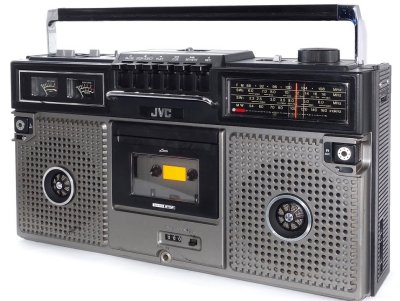
JVC portable cassette recorder
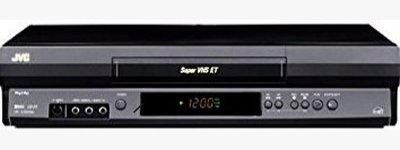
JVC S-292U
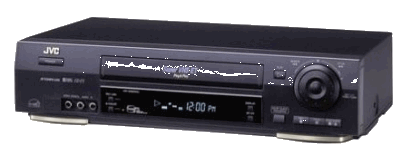
JVC S-5900U

JVC xxxx

JVC xxx
Kenwood Corporation
company website
Established in 1946 as the Kasuga Radio Co. Ltd. in Komagane City, Japan. The company was renamed Trio Corporation in 1960, when William "Bill" Kasuga partnered with George Aratani and Yoichi Nakase. The three men (a trio) established an import company that would be the exclusive U.S. reseller of the Kasuga products under the Trio brand name. The name Kenwood was invented by Kasuga as being the combination of "Ken", a common North American name that had been tested and proven acceptable to American consumers as in the name of Kenmore appliances, and "Wood", referring to a durable substance and suggesting a relationship to Hollywood, California. The brand recognition of Kenwood eventually surpassed that of Trio's, and in 1986 the Trio company was renamed Kenwood. In 2008, Kenwood merged with JVC to form new holding company, JVC-Kenwood. Today, Kenwood's main focus is on the automobile audio aftermarket.
My Experience
I have had a lot of Kenwood products, some excellent, some, not-so-good. My first receiver was a 1960's Kenwood TK-88 I commandeered from my dad (see my first home theater). In 1979, I replaced it with a Kenwood KR-3090. I was very pleased with the performance of the KR-3090 especially when mated to a new pair of Kenwood KL-888X 5-way speakers. The performance was astounding considering the receiver was only rated at 36 watts per channel,
Specifications:
- KR-3090 Frequency response: 20Hz to 50kHz
- Signal to noise ratio: 77dB (MM), 100dB (DIN), 100dB (line)
- Total harmonic distortion: 0.1%
- Power output: 26 watts per channel into 8? (stereo)
- Dimensions: 468 x 140 x 348mm
KL-888x Specifications:
- Type: 5 way, 5 driver loudspeaker system
- Frequency Response: 20Hz to 22kHz
- Power Handling: 125 watts
- Crossover Frequencies: 3 KHz, 5 KHz, 9 KHz, 15KHz
- Impedance: 8?
- Sensitivity: 98dB
- Woofer: 16" paper cone
- Midrange: One 4 ¾ paper cone and one horn
- Tweeter: One 2 ½ aluminum cone
/
- Dimensions: 27" H x 17 ½" W x 10 3/4" D
I owned the KR-3090 for many years. When at last, the sound output became intermittent, I sold the 3090 and bought a new surround-sound receiver, the Kenwood 1070VR. What a piece of junk that was. Lightweight and flimsy-feeling, cheaply made and underpowered. Although it was rated at 120 watts front and 60 watts rear, I could barely hear a set of Bose Acoustimass speakers connected to the rear channel, even with the rears set at maximum volume. The performance was so bad, I actually quit listening to music for several years.
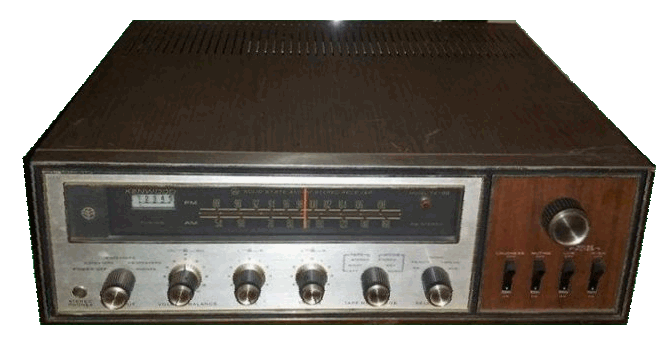
My dad's TK-88 receiver

MY first receiver

My first AV receiver
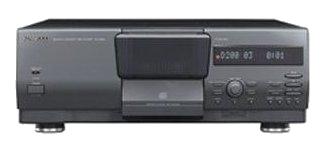
200-disc CD changer

belt-drive turntable

My first receiver

>A poor AV receiver
Onkyo
company website
Onkyo Corporation is a Japanese consumer electronics manufacturer,specializing in premium home cinema and audio equipment, including receivers, surround sound speakers and portable devices. The word Onkyo translates as "sound harmony". In 2015, Onkyo purchased Pioneer Corporation's home electronics, which makes home cinema amplifiers, Blu-ray players and other AV products. In return, Pioneer took a 14.95% stake in Onkyo. The current Onkyo Corporation umbrella includes the Integra and Integra Research divisions as well as the main Onkyo brand.
My Experience
I found an Onkyo open-box return at a discount re-seller, Bargain Hunt. After watching th price for several weeks, I bought it on mark-down with the intent to resell. The Onkyo TX_RZ800 lists for $1299 - but I bought it for $240. I attempted to resell it for a while, but decided to keep it for myself, replacing my venerable Outlaw Audio 950 premp-possessor.
Onkyo TX RZ-800
The Onkyo TX RZ-800 is a 7.2 Channel THX Certified Audio-Video Receiver with integrated Wi-Fi and Bluetooth. It offers many signal processing modes, including
- mono
- stereo
- Dolby Surround EX
- Dolby Pro-Logic II
- Dolby Digital 5.2 and 7.2
- DTS 5.1 and DTS-ES 6.1
- DTS Neo:6
- Cirrus Extra Surround (Music and Cinema)
- "Pure Audio" digital bypass
Audio Specifications (analog section):
- Frequency response: 10 Hz - 90 kHz: +0, -3 dB (Bypass Mode)
- Signal to Noise Ratio: 102 dB (Bypass Mode)
- Distortion: 0.0038% (20 Hz ~ 20 kHz) Bypass Mode)
-(digital section)
- Signal to Noise Ratio: 102 dB
- Total Harmonic Distortion: <0.005% (1 kHz, at 0 dB)
- Dynamic Range: 100 dB
- D/A Output: Rated output 2 V (At 0 dB playback)
Outlaw Audio
company website
Outlaw Audio is a completely different kind of consumer electronics company. Their high performance products are available exclusively on the Internet. Outlaw designs and manufactures its own brand of high performance audio/video components. The advantage of this approach is obvious. By offering these products directly to you via the Internet, we can eliminate the additional markup required to support a traditional "bricks and mortar"" retail store. As a result of this new approach, an Outlaw designed component offers you substantially more performance for a much lower price than any competing product.
My Experience:
I bought an Outlaw Audio 950 Preamp-Signal Processor from the Outlaw website in 2002. After much research, I found that the 950 compared favorably to the capabilities of such equipment as Adcom, Sunfire, and NAD, but at a much cheaper price. The Outlaw 950 offers multiple surround processing modes including, Dolby Surround EX, Dolby Pro-Logic II, Dolby Digital 7.1 and 7.1, DTS 5.1, DTS-ES 6.1 Discrete and Matrix, DTS Neo:6, Cirrus Extra Surround (Music and Cinema Modes), and 'True Stereo' Digital Bypass.
"The Outlaw Audio Model 950: For technology, ease of use, and features, this member of the Outlaw arsenal has no competition. Sometimes we even amaze ourselves..."
Specifications (analog section)
- Frequency response: 10 Hz - 90 kHz: +0, -3 dB (Bypass Mode)
- Signal to Noise Ratio: 102 dB (Bypass Mode)
- Distortion: 0.0038% (20 Hz ~ 20 kHz) Bypass Mode)
-(digital section)
- Signal to Noise Ratio: 102 dB
- Total Harmonic Distortion: <0.005% (1 kHz, at 0 dB)
- Dynamic Range: 100 dB
- D/A Output: Rated output 2 V (At 0 dB playback)
Panasonic Corp.
company website
Panasonic Corporation, formerly known as Matsushita Electric Industrial Co., Ltd. is a consumer electronics corporation headquartered in Osaka, Japan. The company was founded in 1918 as a producer of lightbulb sockets and has grown to become one of the largest Japanese electronics producers alongside Sony, Hitachi, Toshiba, Pioneer and Canon Inc. In addition to electronics, it offers non-electronic products and services such as home renovation services. In 2012, Panasonic was the world's fourth-largest television manufacturer.
My Experience:
I have had two Panasonic products in my setups. My first Video Cassette Recorder was a Panasonic, purchased in 1981. It was a 2-piece unit with tape deck and tuner. The tape deck recorder was portable and could be run off household current or battery. The tuner portion stayed connected to the television. We also had a video camera that connected to the recorder. Portable VCRs were not common in 1981, and the outfit cost $1100, which would be $3000-$3200 in today's dollars (2019). My brother and I used the camera to record a program called "WBNK", a collection of skits and satirical television ads, similar to seen on the late-night television show, Saturday Night Live
.
My only other experience with Panasonic has been two DVD players.
Parasound
company website
Parasound's mission is to put great sound into stunning packages, priced magnitudes lower than any competitor. The result has been that Parasound products have won best-in-class awards in the most popular audiophile publications year after year. Their design and manufacturing partners have stayed to work with us for decades. We receive unsolicited appreciation emails from customers nearly every day. Every shipped product and answered phone call represents our commitment to outstanding performance, reliability, value, and customer support.
My Experience
I bought my first Parasound amplifier, an HCA-1205A, from the Audiogon website. The HCA-1205A is a five-channel amplifier supplying 85 watts per channel into 8. I was so impressed with the clarity and warmth of the PArasound,I bought two HCA-500 amplifiers off of eBay. I also purchaseed a SCAMP power distribution amp and a P/PH100 turntable preamplifier.
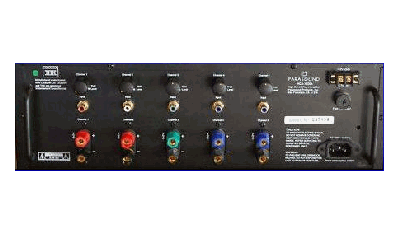
HCA-1205A 5-channel amp
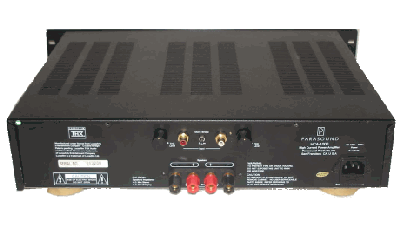
HCA-500 stereo amp
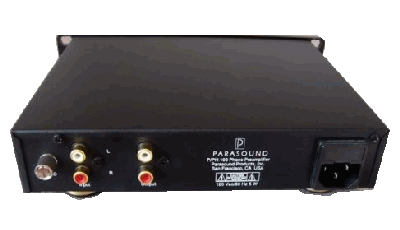
P/PH100 phono preamp
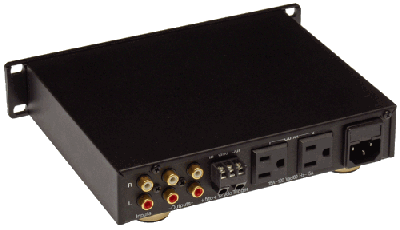
Scamp
HCA-1205A Specifications
- 85 watts RMS x 5, 20 Hz-20 kHz, 8
- Current Capacity - 30 amps per channel
- Total Harmonic Distortion: < 0.03 % at full power
- Dimensions: 17" wide x 6" high x 16" deep
HCA-500 Specifications
- 50 watts RMS x 2, 20 Hz-20 kHz, 8
- Current Capacity - 10 amps per channel
- Total Harmonic Distortion: < 0.25 % at full power
- Dimensions: 17 ¼" wide x 3 ¾" high x 11 3//4" deep
P/P100 Specifications
- 85 watts RMS x 5, 20 Hz-20 kHz, 8
- Current Capacity - 30 amps per channel
- Total Harmonic Distortion: < 0.03 % at full power
- Dimensions: 17" wide x 6" high x 16" deep
SCAMP Specifications
- 85 watts RMS x 5, 20 Hz-20 kHz, 8
- Current Capacity - 30 amps per channel
- Total Harmonic Distortion: < 0.03 % at full power
- Dimensions: 17" wide x 6" high x 16" deep
Pioneer Corporation
company website
Pioneer is a Japanese multinational corporation based in Tokyo, Japan, that specializes in digital entertainment products. The company was founded by Nozomu Matsumoto in 1938 in Tokyo as a radio and speaker repair shop. Pioneer's innovations include the development of interactive cable TV, the Laser Disc player, the first automotive Compact Disc player, the first detachable face car stereo, Supertuner technology, the DVD and DVD recording, plasma displays and the Organic LED display (OLED).In 2007, Sharp Corporation took a 14% shareholder stake in Pioneer which has been reduced to 9%. Sharp still remains the largest shareholder of Pioneer Corporation, followed by Honda Motor Co., Ltd. who owns roughly 4%. In September 2014, Pioneer agreed to sell Pioneer Home Electronics to Onkyo, and in March 2015, Pioneer sold its DJ equipment business division to KKR,
My Experience
My only experince with Pioneer has been a direct drive turntable and a 12-band graphic equalizer.
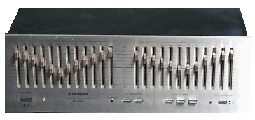
Pioneer

Pioneer
Polk Audio
company website
Polk Audio is a manufacturer of audio products best known for their home and automobile speakers. The company also produces a wide range of other audio products such as amplifiers and FM tuners. The company is headquartered in San Diego, California and in 2006, was acquired by Directed Electronics. Polk Audio has also introduced smart speakers powered by the Google Assistant and Amazon Alecis.
My Experience
My first Polk Audio speakers were the R40 towers which I still use today. That was followed with the purchase of a center channel speaker, The CS. My next Polk Audio purchase was the 8&quuot; front-finig subwoofer, the PSW-250. I later picked up an additional PSW-250 at a pawn shop.
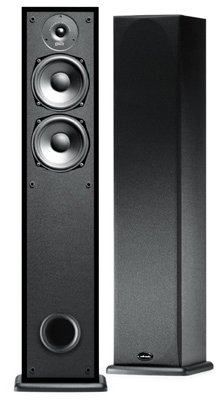
Polk Audio r40
Polk Audio's R-40 offers incredible sound at an outstanding price. Dual medium size drivers give the advantage of wide dispersion and great midrange clarity AND the advantage of large surface area for wide dynamic range and punchy bass. It's the best of both worlds, and its performance can't be beat. Designed for superior home theater and music performance, the R-40 features a front-firing bass port for high efficiency and powerful bass response in a slim tower design that conserves floor space -- less than one square foot.
r40 Specifications
- Two 5 ¼" Dynamic Balance® shielded midrange woofers
- A single 1 3/4" Dynamic Balance® Tri-laminate shielded tweeter
- Rear ported enclosure
- Frequency Response: 52Hz - 26kHz
- Power handling: 10 - 180 watts per channel
- Efficiency: 90 dB
- 6 3/8" H x 16 3/4" W x 9 ½" D
The CS 245i Center Channel
The CS245i is built with Polk's exclusive Dynamic Balance® Tri-Laminate tweeter technology provides smooth response and high power handling. It is the perfect center piece of any home theater system. It boasts smooth, neutral response; high efficiency, and clear, detailed sound -- even in off-axis listening positions.
CS 245i Specifications
- Two 5 ¼" Dynamic Balance® shielded midrange woofers
- A single 1 3/4" Dynamic Balance® Tri-laminate shielded tweeter
- Rear ported enclosure
- Frequency Response: 52Hz - 26kHz
- Power handling: 10 - 180 watts per channel
- Efficiency: 90 dB
- 6 3/8" H x 16 3/4" W x 9 ½" D
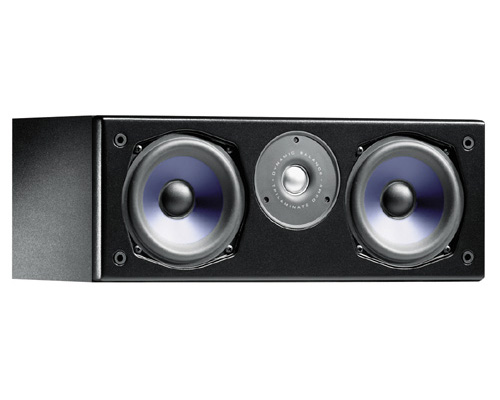
CS 245i Center Channel
The PSW-250 Subwoofer
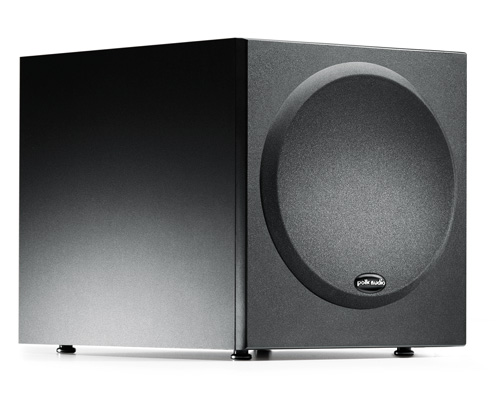
PSW-250 subwoofer

PSW-250 Powered Subwoofer
The performance of this little subwoofer is all out of proportion with its size. Where's all that strong musical bass come from? It comes from a brawny high current amp driving an 8" woofer.
The PSW-250 Specifications
- One 8" Polymer composite direct radiating subwoofer
- Dual flared ports for low distortion
- High current power amplifier with automatic power-on and shut-off
- Adjustable lowpass crossover, phase switch and volume control
- Frequency Response: 30Hz - 180Hz
- 12 ¾" H x 11 ½" W x 18 ½" D
In 200x, we moved to Yorktown, Virginia new house,, in walll
Pyle
company website
Pyle
My Experience
I am not impressed with Pyle. It may be that Pyle builds products for the live perfomssncce versus home reproduction, The PBX hould have been able TO deliver, as it had both 1/4" inputs for live sound and RCA connections for home use. It did not deliver.
I purchased a newPyle PXB active crossover to route The treble and midrange to the maiins and the bass signals to the subs. The concept was vaalid. The pbX had three crossover points, The low-pass coould be set at. The high pass at . I could never get balanced sound out of the Pyle, and eventually I gave up.
Samsung
company website
TEXT
My Experience
I have had two Samsung audio products, a television, and a digital HD television tuner.
Sansui
company website
TEXT
my Experience
My father had a pair of Sansui SP-200 speakers he bought from Japan.
SONY
company website
TEXT
My Experience
I have owned several SONY products
|
Sony WEGA 52" |
|
Sony 52" Wega LCD Television
- HD Monitor plays 1080i, 720p, 480p and 480i
- 16:9 Widescreen display
- Digital Reality Creation line doubling
- Twin View provide picture-in-picture
- DVI and HDTV inputs
- Component video inputs
- S-video inputs
|

|
|
400 Disc DVD |
|
Sony 400 Disc DVD Player
- 200 disc capacity
- Plays stereo, Super Audio CD (SACD) discs, Dolby and DTS 5.1
- Digital Video Enhancement
- 10-bit / 54MHz Video D/A conversion.
|

|
|
Single Disc DVD |
|
Sony single Disc DVD Player |

|
|
==================
Documents
User Manuals
Hook up Charts
My Current VIDEO Line-Up:
|

55" LED Monitor
- Purchased new in 2014
- 55" flat screen display
- HDMI input
- Stereo sound output
- Internet connected, You Tube, Netflix, Etc.
|
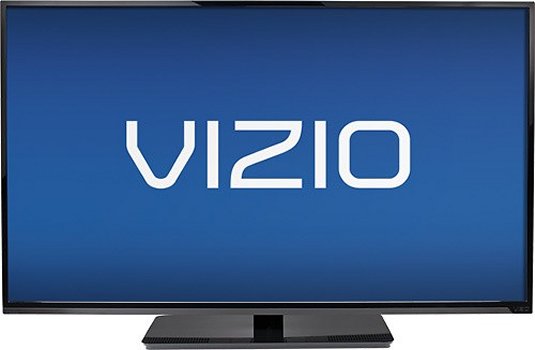
|
|
|---|

Panasonic DVD Player
- purchased used in 2006
- Built-in Internal Decoders
- 10-bit / 54MHz Video D/A
|

|
|
|---|

DVP-NS500
- 400-disc DVD Player
- 5-Channel SACD Playback
- Built-in Internal Decoders
- 10-bit / 54MHz Video D/A
- Close-out purchase in 2001
|
 |
|
|---|

Super-VHS Video Cassette Recorder
- Close-out purchase in 2006
- Super-VHS recording and playback
- S-video outputs
- Hi-Fidelity Stereo in and out
|
 |
|
|---|
My Current AUDIO Line-up:
|
|
|---|

Model TX-RZ800
7-Channel High Current Output Receiver
- 7.1-Channel Surround Processing
- Dolby Digital® Surround EX®
- Dolby ProLogic II®
- DTS® Surround
- more...
|
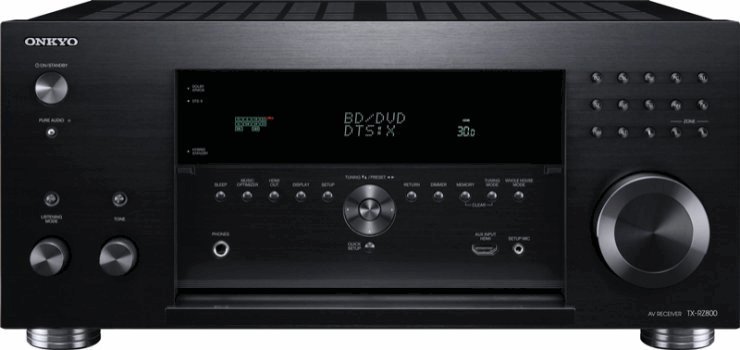

|
|
|---|

dbx 3bx III dynamic range expansion
with impact restoration
- gives added 'punch' to fast transients
|
 |
|
|---|

200-Disc Compact Disc Player |
 |
|
|---|

Belt Drive Turntable |
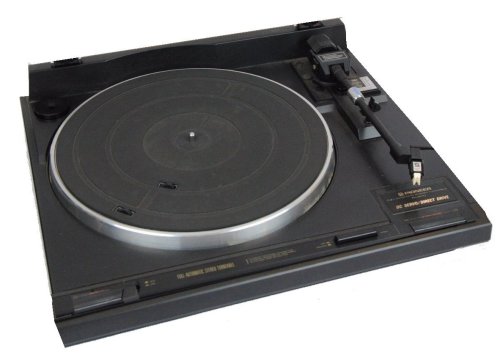 |
|
|---|
My Current SPEAKER Line-up:
|
|
|---|
| FRONT CHANNEL SPEAKERS |

Definitive Technologies BP6
- Front and rear firing speakers for huge room-filling sound
- Two 5 ¼" High-Definition midrange drivers
- Two 1" Annealed Pure Aluminum dome tweeters
- Takes up less than one square foot of floor space
- 7" W x 11" D x 35"
- Frequency Response: 25 Hz - 30 kHz
- Sensitivity: 91 dB
- Power handling capacity: 175 watts
|
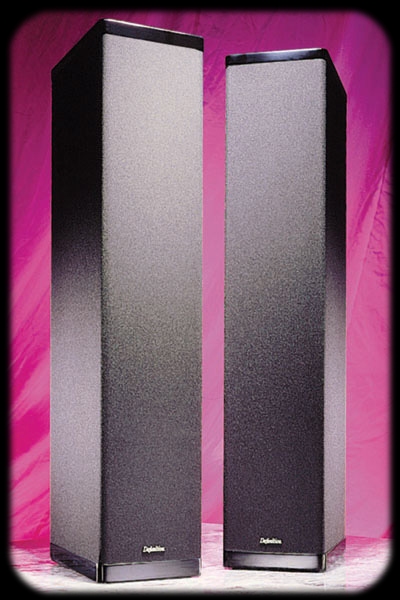 |
CENTER CHANNEL SPEAKER |

Polk Audio CS-245i
- Two 5¼ Inch Shielded Midbass Drivers
- One 1-Inch Shielded Tri-laminate Tweeter
- 180 Watts capacity
- Frequency Response: 52 Hz - 26 KHz
- Sensitivity: 90 dB
|
 |
REAR CHANNEL SPEAKERS |

Polk Audio R40s
- Two 5¼ Inch Shielded Polymer Midbass Drivers
- One 1¾-Inch Shielded Metal dome Tweeter
- 150 Watts capacity
- Frequency Response: 40 Hz - 24 KHz
- Sensitivity: 90 dB
|
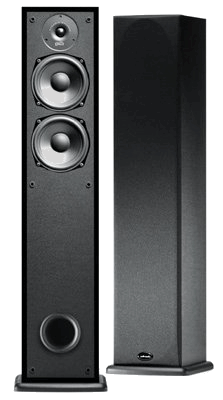 |
SUBWOOFERS |

2 Polk Audio PSW-250s
- 8 Inch Polymer Composite Woofer
- 50 Watt High Current Amplifier
- 30 - 180 Hz Frequency Response
- Adjustable Crossover
|

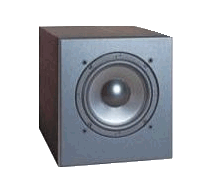 |
My Current VIDEO Line-Up:
|

55" LED Monitor
- Purchased new in 2014
- 55" flat screen display
- HDMI input
- Stereo sound output
- Internet connected, You Tube, Netflix, Etc.
|

|
|
|---|

Panasonic DVD Player
- purchased used in 2006
- Built-in Internal Decoders
- 10-bit / 54MHz Video D/A
|

|
|
|---|

DVP-NS500
- 400-disc DVD Player
- 5-Channel SACD Playback
- Built-in Internal Decoders
- 10-bit / 54MHz Video D/A
- Close-out purchase in 2001
|
 |
|
|---|

Super-VHS Video Cassette Recorder
- Close-out purchase in 2006
- Super-VHS recording and playback
- S-video outputs
- Hi-Fidelity Stereo in and out
|
 |
|
|---|
My Current AUDIO Line-up:
|
|
|---|

Model TX-RZ800
7-Channel High Current Output Receiver
- 7.1-Channel Surround Processing
- Dolby Digital® Surround EX®
- Dolby ProLogic II®
- DTS® Surround
- more...
|


|
|
|---|

dbx 3bx III dynamic range expansion
with impact restoration
- gives added 'punch' to fast transients
|
 |
|
|---|

200-Disc Compact Disc Player |
 |
|
|---|

Belt Drive Turntable |
 |
|
|---|
My Current SPEAKER Line-up:
|
|
|---|
| FRONT CHANNEL SPEAKERS |

Definitive Technologies BP6
- Front and rear firing speakers for huge room-filling sound
- Two 5 ¼" High-Definition midrange drivers
- Two 1" Annealed Pure Aluminum dome tweeters
- Takes up less than one square foot of floor space
- 7" W x 11" D x 35"
- Frequency Response: 25 Hz - 30 kHz
- Sensitivity: 91 dB
- Power handling capacity: 175 watts
|
 |
CENTER CHANNEL SPEAKER |

Polk Audio CS-245i
- Two 5¼ Inch Shielded Midbass Drivers
- One 1-Inch Shielded Tri-laminate Tweeter
- 180 Watts capacity
- Frequency Response: 52 Hz - 26 KHz
- Sensitivity: 90 dB
|
 |
REAR CHANNEL SPEAKERS |

Polk Audio R40s
- Two 5¼ Inch Shielded Polymer Midbass Drivers
- One 1¾-Inch Shielded Metal dome Tweeter
- 150 Watts capacity
- Frequency Response: 40 Hz - 24 KHz
- Sensitivity: 90 dB
|
 |
SUBWOOFERS |

2 Polk Audio PSW-250s
- 8 Inch Polymer Composite Woofer
- 50 Watt High Current Amplifier
- 30 - 180 Hz Frequency Response
- Adjustable Crossover
|

 |
- The SUX button.
- Bi-amping
- graohic vs parametruc eq
- definitions


